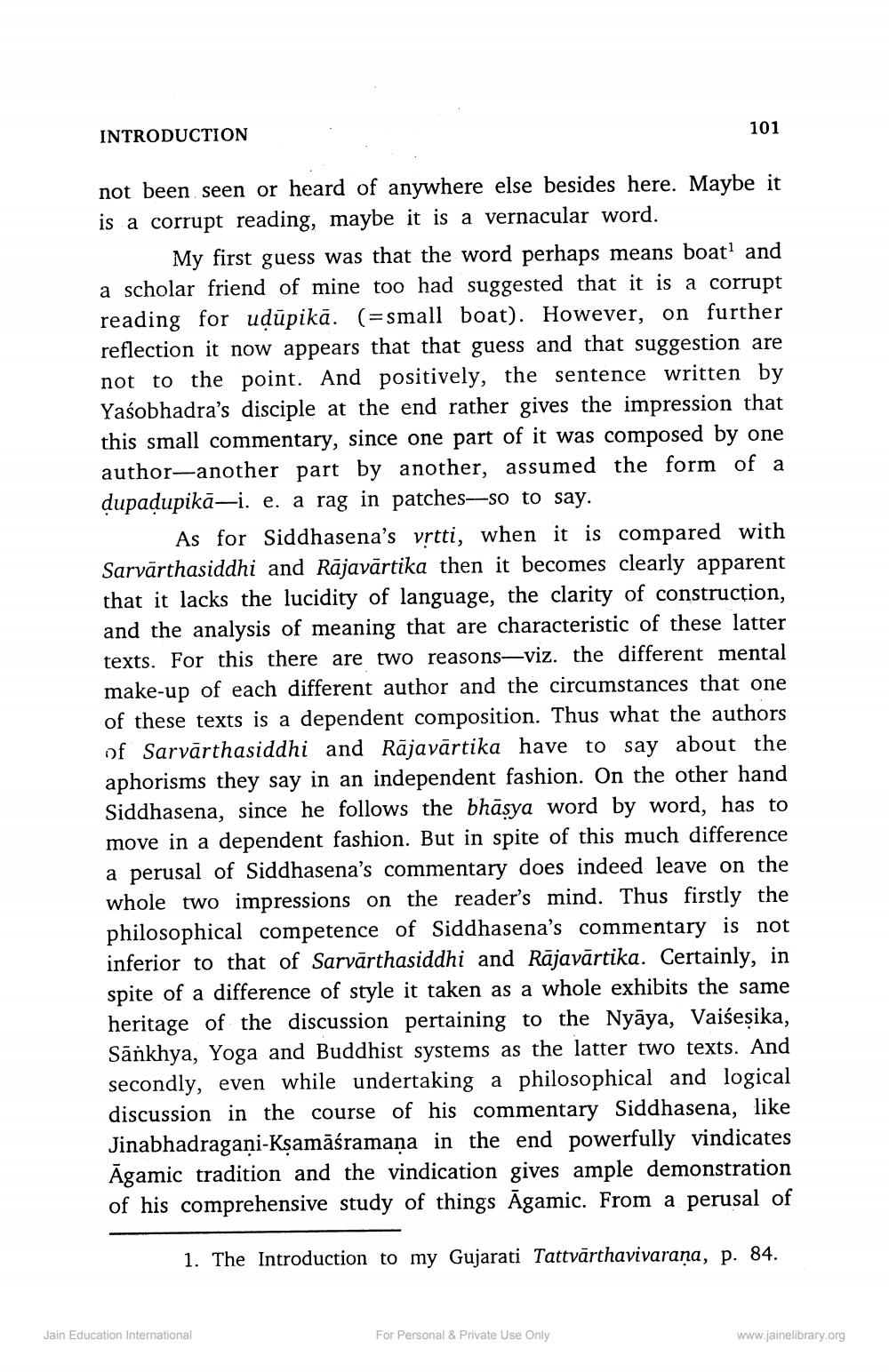________________
INTRODUCTION
not been seen or heard of anywhere else besides here. Maybe it is a corrupt reading, maybe it is a vernacular word.
101
My first guess was that the word perhaps means boat1 and a scholar friend of mine too had suggested that it is a corrupt reading for uḍūpikā. (=small boat). However, on further reflection it now appears that that guess and that suggestion are not to the point. And positively, the sentence written by Yaśobhadra's disciple at the end rather gives the impression that this small commentary, since one part of it was composed by one author-another part by another, assumed the form of a dupaḍupika-i. e. a rag in patches-so to say.
As for Siddhasena's vṛtti, when it is compared with Sarvärthasiddhi and Rajavārtika then it becomes clearly apparent that it lacks the lucidity of language, the clarity of construction, and the analysis of meaning that are characteristic of these latter texts. For this there are two reasons-viz. the different mental make-up of each different author and the circumstances that one of these texts is a dependent composition. Thus what the authors of Sarvarthasiddhi and Rājavārtika have to say about the aphorisms they say in an independent fashion. On the other hand Siddhasena, since he follows the bhāṣya word by word, has to move in a dependent fashion. But in spite of this much difference a perusal of Siddhasena's commentary does indeed leave on the whole two impressions on the reader's mind. Thus firstly the philosophical competence of Siddhasena's commentary is not inferior to that of Sarvarthasiddhi and Rājavārtika. Certainly, in spite of a difference of style it taken as a whole exhibits the same heritage of the discussion pertaining to the Nyaya, Vaiśeṣika, Sankhya, Yoga and Buddhist systems as the latter two texts. And secondly, even while undertaking a philosophical and logical discussion in the course of his commentary Siddhasena, like Jinabhadragani-Kṣamāśramaṇa in the end powerfully vindicates Agamic tradition and the vindication gives ample demonstration of his comprehensive study of things Agamic. From a perusal of
1. The Introduction to my Gujarati Tattvärthavivarana, p. 84.
Jain Education International
For Personal & Private Use Only
www.jainelibrary.org




